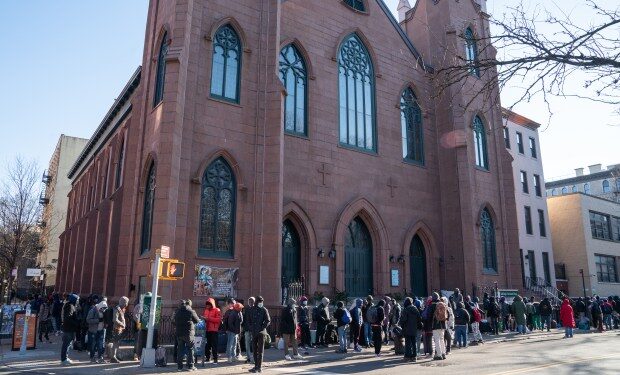New York City is significantly expanding its 60-day limits to shelters where the bulk of migrant families are staying but until now had been spared eviction, the Adams administration confirmed Tuesday.
Because of a quirk in the city’s patchwork shelter system, Mayor Adams needed state approval to limit stays at shelters under the purview of the Department of Homeless Services. Families seeking asylum in other shelter types run by other agencies had been subject to the policy since the beginning of the year, as the city did not need state approval to move forward on those.

That approval appears to have come and was communicated to shelter providers on Monday, as first reported by the nonprofit news site The City. Up to 30,000 parents and children currently living in DHS shelters could be impacted by the expansion, top administration officials said.
“People should not be in shelters their entire lives,” said Mayor Adams during a press briefing at City Hall. “This is traumatizing, and I don’t know if any of you have seen what it is, but it is traumatizing to live in these conditions.”
Adams announced the 60-day policy in October as an influx of asylum seekers strained the city’s shelter system. Since then, the policy has been panned by shelter providers, teachers and left-leaning elected officials, who consider it counterproductive for families trying to find their footing in New York.
The administration has said the limits are a key tool in moving migrants out of temporary housing and containing the spiraling costs of the crisis.

About 19,700 notices have been served to families with children since the policy was implemented in January, according to local data. Naveed Hasan, a member of an Upper West Side-based immigration coalition focused on education and other policies, said the limits have been “one of the worst things to do to a classroom environment.”
“This has caused chaos inside classrooms,” said Hasan, “because not only are the families that are being evicted being directly impacted in a way where they might have a really difficult time coming back to their school, because they might be living somewhere far away.”
“But also for the kids that are in that class, who have a rotating cast of classmates. So not only are those relationships broken routinely. On top of that, the teacher can’t establish a rapport with every student, because it’s different students every two months,” he added.

AP Photo/Andres Kudacki
Migrant families leave for a walk to school in front of the Row Hotel that serves as migrant shelter on Tuesday, Dec. 12, 2023, in New York. (AP Photo/Andres Kudacki)
The Adams administration had been in talks “for a while” with the State Office of Temporary and Disability Assistance, according to Deputy Mayor for Health and Human Services Anne Williams-Isom — before moving this week to start handing out the 60-day notices in DHS shelters.
“I don’t call them eviction notices. I call them time limits, and so that we’re telling people that they have 60 days and that they can see if there’s other places, other family members that they need to go to,” Williams-Isom said.
With previous rounds of evictions, “there were people who were like, oh, I was thinking about moving, and now I can see that I have this other opportunity,” she added. “If there, for some reason, they are not able to, they reapply, and then we’ll go over and make sure that they get the case management that they have and need.”
Murad Awawdeh, president of the New York Immigration Coalition, condemned the expansion, saying it does little to successfully integrate immigrants — and called for long-term solutions such as housing vouchers.
“With little notice, parents will be scrambling to secure a roof over their heads while their children will likely have their schooling interrupted,” he said, “just as the new school year begins.
With Chris Sommerfeldt
Originally Published:







